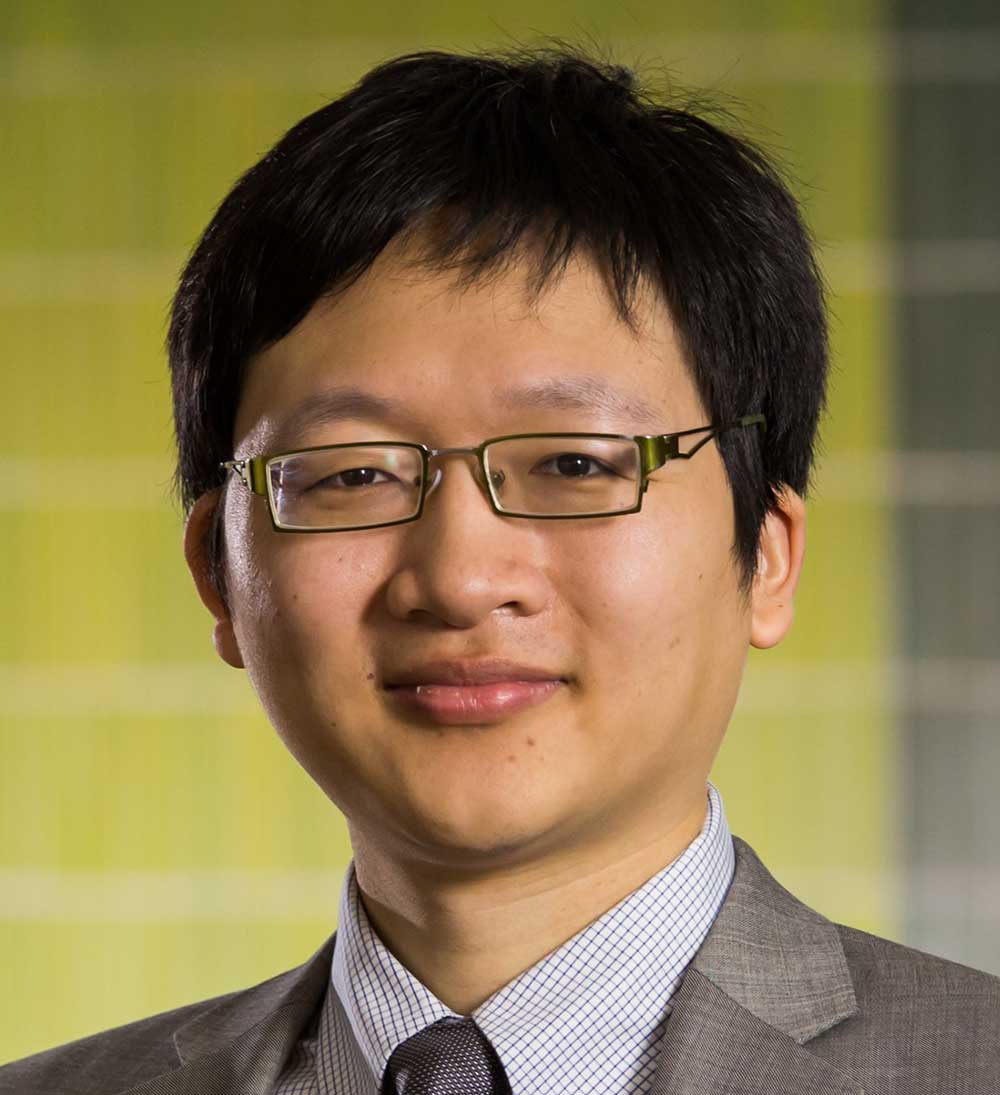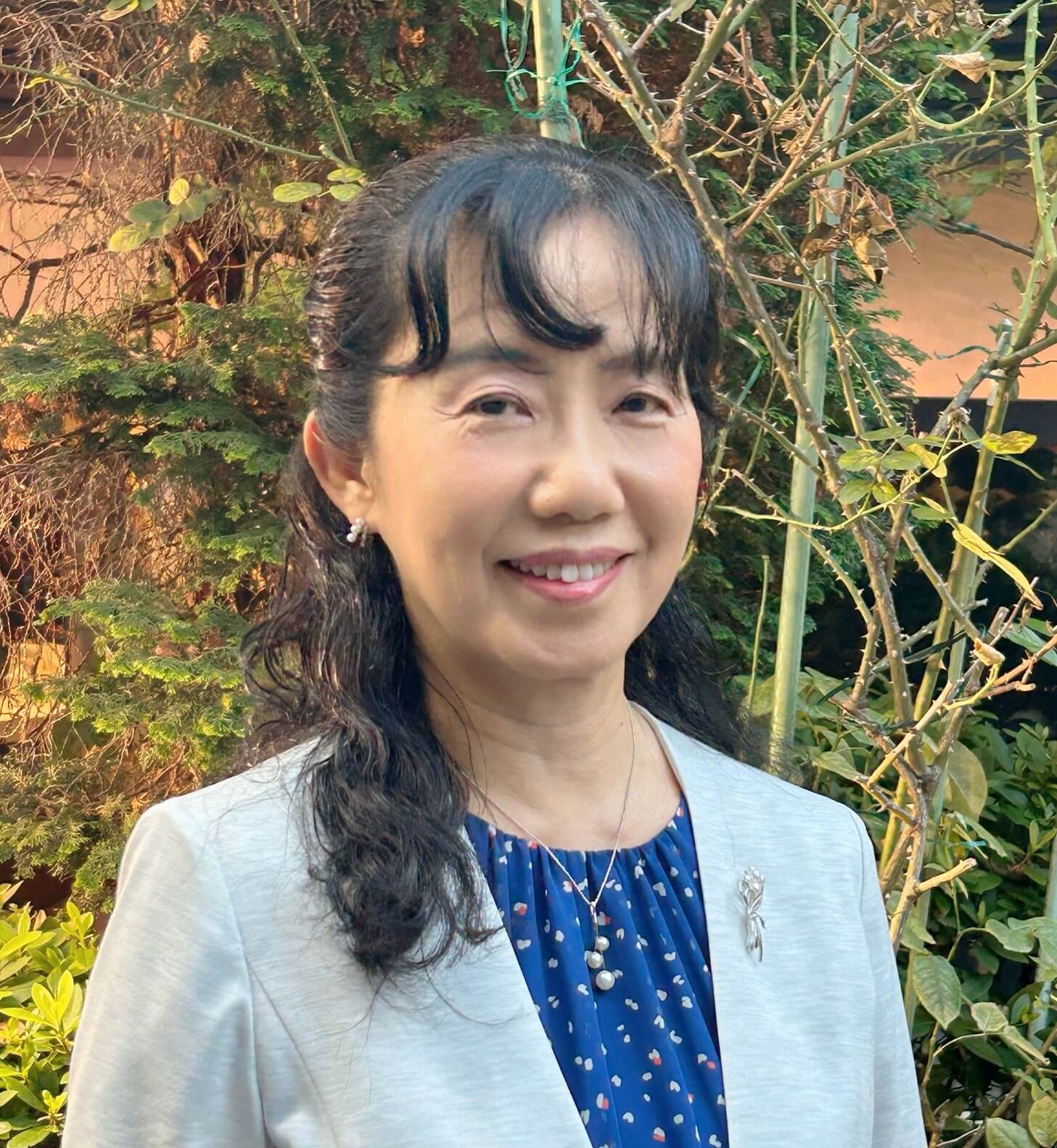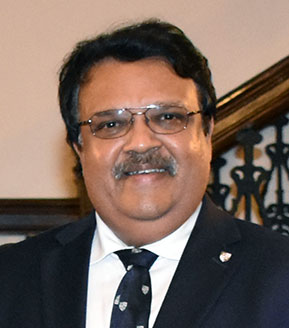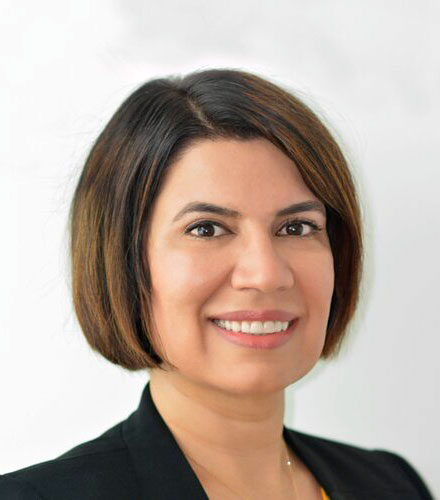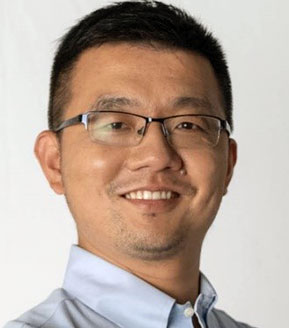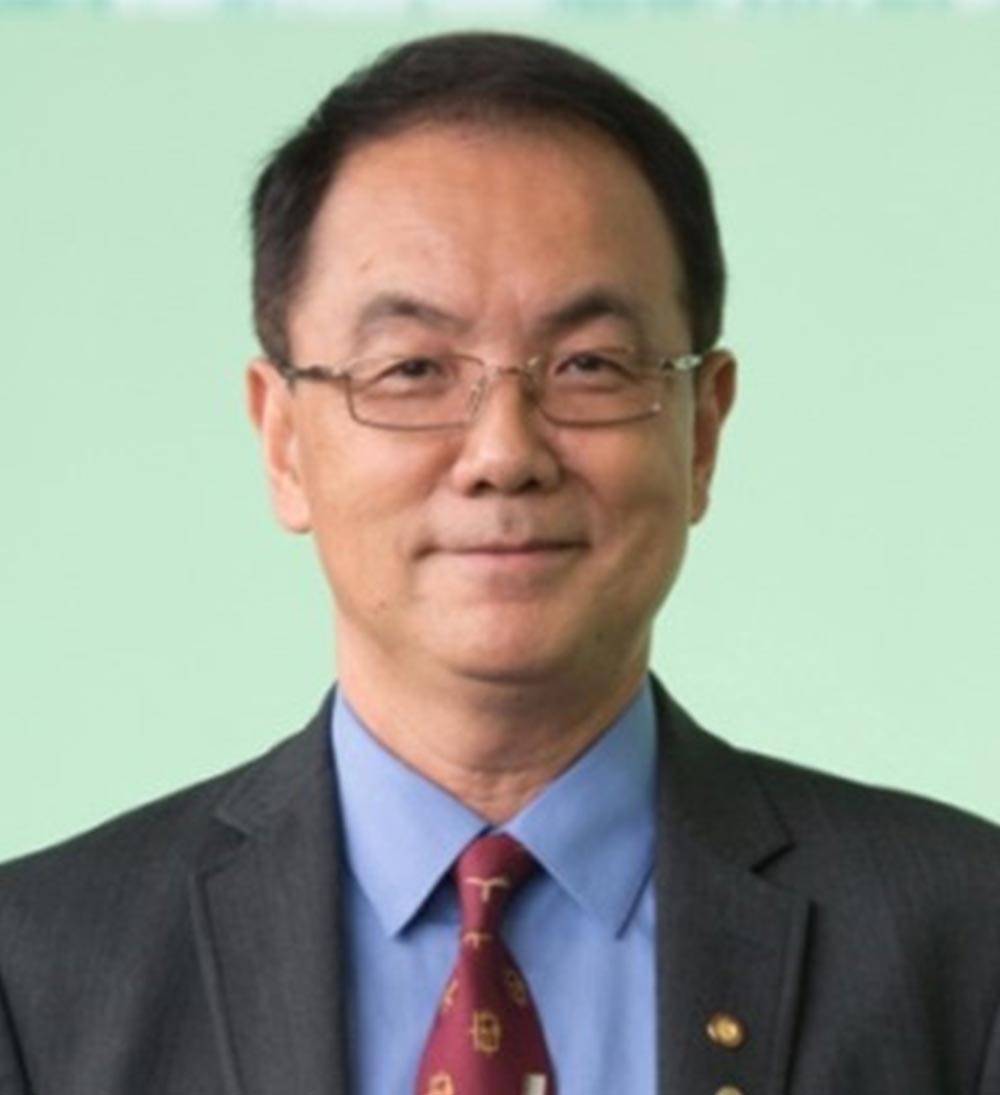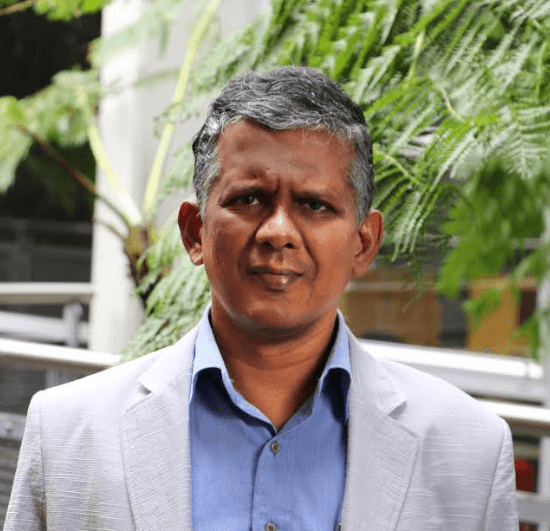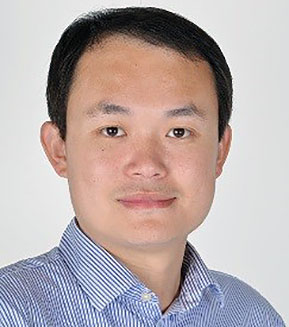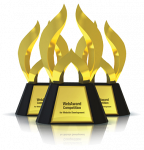BRING A DISTINGUISHED LECTURER TO YOUR CHAPTER
PELS Members Who Are Experts in The Field of Power Electronics
The PELS Distinguished Lecturer program is among the most exciting offerings available to PELS Chapters. Each year, PELS selects some of its distinguished members to become a DL. This celebrates and honors their high achievements in the power electronics field while supporting PELS Chapter activities with high-profile speakers for local chapter and section events.
Please note: the DL program does not support a DL giving a presentation or tutorial at a regular IEEE conference.
REGIONAL DISTINGUISHED LECTURERS (RDL)
In addition to the DL program, PELS also offers a Regional Distinguished Lecturer (RDL) program to support members and local chapters in various regions around the globe. Available RDLs will usually give lectures in PELS local chapter and section events within their region and in a local language.

Meet our Current Distinguished Lecturers (DL) and Regional Distinguished Lecturers (RDL)
PELS DISTINGUISHED LECTURERS
Minjie Chen (Senior Member, IEEE) received his B.S. in Electrical Engineering from Tsinghua University (China) in 2009 and his Ph.D. in Electrical Engineering and Computer Science from Massachusetts Institute of Technology (USA), both with honors. Dr. Chen is currently the Vice Chair of PELS TC 10 (Design Methodologies) and launched the PELS MagNet Challenge in 2023.
Read More
Achievements:
– Best Conference Paper Awards: 3D-PEIM, APEC, COMPEL, ECCE, ICRA, IROS, OCP
– IEEE PELS Richard M. Bass Outstanding Young Power Electronics Engineer Award (2023)
– IEEE Transactions on Power Electronics Prize Paper Award (2016-2017, 2020-2022)
– Massachusetts Institute of Technology EECS D.N. Chorafas Ph.D. Thesis Award (2016)
– NSF CAREER Award (2019)
– Princeton Engineering Commendation List for Outstanding Teaching (2019)
– Princeton Keller Center Innovation Forum (2019)
– Princeton SEAS Junior Faculty Award (2022)
Research Interests: Data-driven methods, Design of high-performance power electronics for critical applications, High-frequency power electronics, Power architecture, Power magnetics
Presentations
Power Electronics for High-Performance Computing: Architecture and Magnetics Co-Design
Power Electronics for High-Performance Computing: Architecture and Magnetics Co-Design
The energy demand of future computing gives rise to new challenges in high-current voltage regulator modules (VRMs). This talk reviews the recent developments in architecture and magnetics for 48-V VRMs, focusing on achieving high efficiency, high power density, high control bandwidth, and compact system packaging. The strengths and weaknesses of many representative solutions are compared. We highlight the key opportunities and challenges and present comprehensive co-design guidelines for 48-V VRM architecture and magnetics.
MagNet Project and Data Driven Methods for Power Magnetics Modeling
MagNet Project and Data Driven Methods for Power Magnetics Modeling
This talk presents why, how, and what we can do to perform power magnetic modeling with machine learning. We first introduce an open-source database – MagNet – which hosts a large amount of experimentally measured excitation data for many materials across a variety of operating conditions, and then demonstrate a few successful neural network-based power magnetics modeling tools for modeling core losses and B-H loops. Neural network models are found effective in compressing the measurement data and show generalities in predicting magnetic characteristics that do not exist in the training data.
Models and Design Methods for Complex Multi-Winding Transformers and Coupled Inductors
Models and Design Methods for Complex Multi-Winding Transformers and Coupled Inductors
Multi-winding transformers and coupled inductors are critical building blocks for a wide range of power electronics applications ranging from isolated dc-dc converters to CPU VRMs. This talk presents a systematic approach to modeling complex multi-winding magnetic structures including (1) a systematic approach to modeling impedance and current distribution in planar magnetics; (2) a unified model to quantify the performance benefits of multiphase PWM coupled inductors; and (3) a range of design considerations and optimization tools for high performance power electronics systems enabled by complex power magnetic structures.
Differential Power Processing and Multi-Input-Multi-Output Energy Systems
Differential Power Processing and Multi-Input-Multi-Output Energy Systems
This talk covers differential power processing and multi-input-multi-output power electronics design. We will first review the analytical models and performance limits of differential power processing, followed by the design example of an ultra-efficient differential power processing system for data storage servers. The design considerations for a few multi-input-multi-output (MIMO) energy systems developed based on multi-active-bridge (MAB) converters will then be presented. The MIMO and MAB energy router opens new design opportunities for a wide range applications.
Noriko Kawakami (Fellow, IEEE) received her B.Sc. degree in science from Sophia University (Japan) in 1982 and her Ph.D. degree in electrical engineering from the Tokyo Institute of Technology (Japan). Dr. Kawakami is currently an Editor for the IEEE Journal of Emerging and Selected Topics in Power Electronics.
Read More
Work History:
1982-2003: Toshiba Corporation (Japan)
2003-Current: Toshiba Mitsubishi-Electric Industrial Systems Corporation (Japan)
Achievements:
– Co-Chair of the Organizing Committee for IPEC and ECCE-Asia (2018)
– IEEE Gerald Kliman Innovator Award (2023)
– IEEE McMurray Award for Industry Achievements in Power Electronics (2022)
– Member at Large of the IEEE PELS Administrative Committee (2018-2023)
– Member of the IEEE William E. Newell Award Committee (2019-2021)
– PELS Regional Distinguished Lecturer for Region 10 (2020-2023)
– President of the Industry Applications Society of IEE-Japan (2018-2020)
Presentations
Technologies and Trends of Large-Capacity Inverters for Grid-Scale PV Plants and BESS Plants
Technologies and Trends of Large-Capacity Inverters for Grid-Scale PV Plants and BESS Plants
In my presentation, I will present an overview of the main technologies adopted in grid connected
inverters for large scale photovoltaic (PV) plants and battery energy storage system (BESS) plants. The
overview starts presenting the circuit topology, cooling system and the on-site integration and
deployment of the system followed by the trends of functions expected for inverters in future power
systems that have introduced large-scale renewable energy power generations.
Power Electronics Technology Contributing to Carbon Neutrality
Power Electronics Technology Contributing to Carbon Neutrality
At the 28th the United Nations Climate Change Conference (COP28) held in Dubai, the COP approved a
roadmap for "moving away from fossil fuels" for the first time. At the G7 Environment Ministers' Meeting
held in Sapporo in April 2023, it was clearly stated that the expansion of renewable energy, such as an
increase of 150 GW of offshore wind power and 1 TW of solar power, and that hydrogen and ammonia
will contribute to carbon neutrality in various fields and industries. To realize a carbon neutral society, it is
also important to reduce CO2 emissions by improving the efficiency of energy consumption. Power
electronics technology is involved in all aspects of this. In this presentation, I will introduce variety of
large-capacity power electronics technology that contributes to carbon neutrality.
Leaping the Gender Gap! Why Engineering is a Worthwhile Career
Leaping the Gender Gap! Why Engineering is a Worthwhile Career
I have been working as an engineer for more than 40 years. The job is very interesting and worthwhile
for me, because equipment which I studied, developed, and verified is used in society, and contributes to
people's lives. Engineering is a profession to enrich people’s lives by solving technical issues and
launching products into society. The evaluation is given to the result of "technology". In that sense,
engineering is one of the professions where gender has the least influence on evaluations.
In my presentation, through my experience, I would like to explain the rewards as an engineer regardless
of gender.
Sanjib Kumar Panda (Fellow, IEEE) received his B. Eng. degree from the South Gujarat University (India) in 1983, M.Tech. degree from the Indian Institute of Technology, Banaras Hindu University (India) in 1987, and Ph.D. degree from the University of Cambridge (UK) in 1991, all in electrical engineering. Dr. Panda is currently the Chair of PELS TC 12 (Energy Access and Off-Grid Systems) and serves as an Associate Editor for various IEEE Transactions.
Read More
Achievements:
– Cambridge-Nehru Scholarship (during Ph.D. study, 1987-1991)
– Co-author of one book and several book chapters
– Co-founded three start-up companies
– Holds six patents
– M.T. Mayer Graduate Scholarship (during Ph.D. study, 1987-1991)
– Published over 450 peer-reviewed research papers
Research Interests: Building energy efficiency enhancement, Condition monitoring and predictive maintenance, High-performance control of motor drives and power electronic converters
Presentations
A Futuristic Medium-Voltage Grid-Connected Multi-Port Public Electric-Vehicle Ultra-Fast Charging-Station with G2V and V2G capability
A Futuristic Medium-Voltage Grid-Connected Multi-Port Public Electric-Vehicle Ultra-Fast Charging-Station with G2V and V2G capability
Medium-voltage (MV) grid-connected solid-state-transformer (SST) based fast-charging (FC) stations provide several merits in terms of improved efficiency, power density, current limiting capability, etc. However, the propositions in literature are either not bidirectional (to simultaneously support V2G and G2V) or are unable to interface multiple types of plug-in electric-vehicles (PEVs), which are not able to meet the expectations of future fast-charging infrastructures. The fast-charging solutions available commercially are mostly for interfacing with the low voltage grid, and are unable to connect multiple type of PEVs. In this lecture, a futuristic MV grid-connected public multi-port FC/dC station is presented which not only resembles a conventional vehicle refuelling station’s functionality by simultaneously interfacing all three types of PEV categories (heavy or hPEVs, medium or mPEVs and light or lPEVs), but also facilitates bidirectional power flow for V2G applications. The modulation, operation and control schemes of the front-end (FE) MVAC-LVDC single-stage conversion and back-end (BE) DC-DC conversion of the proposed architecture are presented in details. Real-time digital-simulator (RTDS) based Hardware-in-loop (HIL) test results for full-scale 22 kV, 1 MVA architecture’s bidirectional operation verifies the proposed operation and controller for full-scale operation. The architecture facilitates simultaneous FC/dC of 1 hPEV within 49.5 min, 2 mPEVs within 28 min and 4 lPEVs within 16 min, while adhering closely to the prescribed charging/discharging schedules of each PEV. Finally, a proportionally scaled down 1 kV, 13.2 kVA experimental verification validates the architecture’s performance during drastic net power flow change conditions and exhibits a peak efficiency of 96.4% with a power density of 3.2 kVA/L. A comprehensive benchmarking of the proposed architecture with commercially available FC products is also presented.
A Plug and Play Operational Approach for Implementation of an Autonomous-Micro-Grid System
A Plug and Play Operational Approach for Implementation of an Autonomous-Micro-Grid System
The electric power system is going through an unprecedented transformation and related challenges in the implementation of smart grids. The smart grid is based on the flexible electrical power system that coordinates different energy resources and loads with the aim of delivering sustainable, economical and reliable electrical supply to the loads in an efficient manner. In this presentation, a plug and play type autonomous-microgrid system formation is proposed. Multiple distributed generating sources and loads interaction is considered pertaining to the stability of the micro-grid. The proposed method enables communication-less operation of each of the elements of the micro-grid system. It is also considered that the sources are of different power capacity as can be seen in a typical autonomous micro-grid system. Spatial Repetitive Controller (SRC) is proposed to control each of the distributed generating sources in a decentralized manner to stabilize the overall micro-grid system. The proposed system considers sudden change in load as well as other distributed generators conditions like a true plug and play operation. A novel signature frequency voltage injection method is proposed to identify the presence of special distributed generator and operation of backup distributed generators. The implemented control architecture also ensures stability of the micro-grid fundamental frequency even in the case of dynamic conditions unlike the traditional droop-control method. A detailed experimental study is carried out and the experimental results presented show the efficacy of the proposed system.
Design Optimization Framework for Solid-State-Transformers: A Novel Approach for an Emerging Technology
Design Optimization Framework for Solid-State-Transformers: A Novel Approach for an Emerging Technology
The power electronics technology is expected to dominate the power systems of the future due to the necessity of continuous controllability of power flow and enhanced smart functionalities. A focussed review of the medium-voltage (MV) grid-connected isolated power conversion techniques, regarding their relevance and applicability for bidirectional medium-voltage AC – low-voltage DC (MVAC-LVDC) conversion, reveals the need for high-power density power architectures with comparable efficiency and cost with respect to contemporary line-frequency transformer (LFT) based solutions. Some of the emerging applications of such bidirectional MVAC-LVDC converters are in electric-vehicle (EV) charging, Energy Control Centre (ECC) for microgrids, Green Data-Centre power distribution, etc.
Due to the lack of a comprehensive multi-objective optimal design framework for isolated MVAC-LVDC conversion, MVAC-LVDC converter designs are mostly obtained through trial/experience. The challenges of computationally expensive magnetics design, coupled with the correlation between magnetics design and performance of semiconductor devices, may be effectively tackled by developing hybrid (numerical+analytical) local optimization algorithms. This local optimization could be subsequently learned through machine-learning techniques, using a limited number of optimal design datasets, and, thus, assists in the genesis of globally optimal design limits for several combinations of semiconductor devices and switching frequencies. The commercial SiC-MOSFET based MVAC-LVDC isolated converter designs not only provide 10-12 times better power density compared to LFT based solutions, but are also observed to offer better efficiency-power density optimal designs compared to Si-based designs by providing a power density improvement of 3-4 times for comparable efficiency performance.
Single-phase inverter control techniques for interfacing renewable energy sources with micro-grid – Parallel connected inverter topologies with active and reactive power flow control along with grid current shaping
Single-phase inverter control techniques for interfacing renewable energy sources with micro-grid – Parallel connected inverter topologies with active and reactive power flow control along with grid current shaping
Renewable energy sources (RESs) have been receiving significant attention recently worldwide as a sustainable alternative type of energy supply in the energy mix. Inverters are being used to convert the dc voltage into ac voltage before being injected into the grid or isolated loads.
In this presentation, a novel current control technique is proposed to control both active and reactive power flow from a renewable energy source feeding a micro-grid system through a single-phase parallel connected inverter. The parallel connected inverter ensures active and reactive power flow from the grid with low current THD even in the presence of non-linear load. A p-q theory-based approach is used to find the reference current of the parallel connected converter to ensure desired operating conditions at the grid terminal. The proposed current controller is simple to implement and gives superior performance over the conventional current controllers such as rotating frame PI controller or stationary frame Proportional Resonant (PR) controller. The stability of the proposed controller is ensured by direct Lyapunov method. A new technique based on the Spatial Repetitive Controller (SRC) is also proposed to improve the performance of the current controller by estimating the grid and other periodic disturbances. Detailed experimental results are presented to show the efficacy of the proposed current control scheme along with the proposed non-linear controller to control the active and reactive power flow in a single-phase micro-grid under different operating conditions.
Single-phase inverter control techniques for interfacing renewable energy sources with micro-grid: Series connected inverter topologies with active and reactive power flow control along with grid current shaping
Single-phase inverter control techniques for interfacing renewable energy sources with micro-grid: Series connected inverter topologies with active and reactive power flow control along with grid current shaping
Renewable energy sources (RESs) have been receiving significant attention recently worldwide as a sustainable alternative type of energy supply in the energy mix. Inverters are being used to convert the dc voltage into ac voltage before being injected into the grid or isolated loads.
In this presentation, a control strategy for a single-phase series connected inverter with the micro-grid is proposed to interface AC loads not only to regulate the load voltage under voltage disturbances but also, to control the load power drawn from the micro-grid. The inverter compensating voltage works in such a way that, irrespective of any type of disturbances in the micro-grid voltage (such as sag, swell or harmonic distortions), the load voltage is maintained at its rated voltage level with low THD in voltage. The proposed control strategy also facilitates a specific amount of active power flow (from renewable energy source) to the load irrespective of the micro-grid voltage condition. The rest of the load power is supplied by the micro-grid. To facilitate this control strategy a Spatial Repetitive Controller (SRC) is proposed and implemented in micro-grid phase (q ) domain to make the controller independent of the micro-grid frequency. The proposed controller ensures dynamic stability of the system even if there is a sudden change in the micro-grid frequency. Detailed experimental results are presented to show the efficacy of the proposed series inverter system along with the controller under different operating conditions
Biography coming soon.
Read More
Biography coming soon.
Presentations
Snubberless Naturally Clamped Soft-switching Bidirectional Current-fed DC/DC Converters
Snubberless Naturally Clamped Soft-switching Bidirectional Current-fed DC/DC Converters
Description coming soon.
Partial Resonant Based Soft-switching Current-fed DC/DC Converters
Partial Resonant Based Soft-switching Current-fed DC/DC Converters
Description coming soon.
Electrolytic Capacitorless Pulsating DC Link Three-phase Inverter
Electrolytic Capacitorless Pulsating DC Link Three-phase Inverter
Description coming soon.
Fundamental Device Switching Frequency Control of Multilevel Inverters for Medium Voltage Drives
Fundamental Device Switching Frequency Control of Multilevel Inverters for Medium Voltage Drives
Description coming soon.
Maryam Saeedifard (Senior Member, IEEE) received her B.S. and M.S. degrees from Isfahan University of Technology (Iran) in 1998 and 2002, respectively, and Ph.D. degree from the University of Toronto (Canada) in 2008, all in electrical engineering. Dr. Saeedifard is currently an editor for various IEEE Transactions, including the IEEE Transactions on Power Electronics.
Read More
Work History:
2007-2008: ABB Corporate Research Center (Switzerland)
2010-2013: Purdue University (USA)
2014-Current: Georgia Institute of Technology (USA)
Achievements:
– Served on technical program committees for PELS and IEEE conferences (APEC, IECON)
Research Interests: Applications of power electronics in power systems and transportation systems
Xu She (Senior Member, IEEE) received his B.Sc. and M.Sc. degrees from Huazhong University of Science and Technology (China) in 2007 and 2009, respectively, and Ph.D. degree from North Carolina State University (USA) in 2013, all in electrical engineering. Dr. She is currently a Vice Chair for the PELS Standards Committee and IEEE P3105 standard working group as well as an Associate Editor for various IEEE publications.
Read More
Work History:
2013-2022: General Electric and Carrier Corporation (USA)
2023-Current: Lunar Energy (USA)
Achievements:
– GE Whitney Technical Achievement Award (2018)
– IEEE IAS Andrew W. Smith Outstanding Young Member Achievement Award (2017)
– IEEE IES Rudolf Chope R&D Award (2022)
– IEEE Region 1 Industry Technological Innovation Award (2021)
– Organizing committee member for IEEE ECCE
– Published over 75 papers, 40 patent families, and three book chapters
Presentations
Silicon carbide power conversion systems for industrial applications
Silicon carbide power conversion systems for industrial applications
This lecture presents silicon carbide technology and its application for industrial applications. Critical barriers of applying silicon carbide power devices will be presented and novel solutions to overcome those barriers will be illustrated. Specifically, this lecturer will cover the technical aspects of advanced topology, thermal management, component design, etc. from industry design point of view. A few published design examples will be shared covering general purpose silicon carbide power converter as well as specific designs for solar and energy storage applications.
Solid state transformers: journey from R&D to recent standard development
Solid state transformers: journey from R&D to recent standard development
Solid state transformer is an emerging technology that replaces the traditional line frequency transformer with additional functions and intelligence. It has gained significant attention in the past 10 years with number of publications increased by more than 25x. Around the world, there are many on-going demonstration projects for different applications, such as smart grid integration, EV fast charger, wind and solar power conversion, etc. This lecture provides an overview of development effort of solid-state transformers, a journey starting from early-stage R&D to recent standard development effort (IEEE P3105) within IEEE power electronics society.
System thinking and its role in innovation of power electronics dominated industrial systems
System thinking and its role in innovation of power electronics dominated industrial systems
This lecture will share the philosophy of system thinking and its role in innovation of power electronics and systems. In the first part, an innovation framework will be presented to show how a well-rounded thought process can lead to meaningful innovation. The second part will introduce innovation on power electronics design from equipment manufacturer point of view, with special focus on advanced silicon carbide power conversion technologies for industrial applications. The third part will focus on system innovation and explore how to leverage power electronics technologies to reinvent system architectures towards carbon neutral society.
Don Tan (Fellow, IEEE) received his Ph.D. from Caltech (USA). Dr. Tan is currently the President of teh IEEE Transportation Electrification Council, Chair of the IEEE Fellow Advisory and Oversight Committee, and Vice Chair of the IEEE Industry Engagement Committee.
Read More
Achievements:
– Delivered more than 80 keynotes/invited global presentations
– Developed electronics that performed flawlessly on the James Webb Space Telescope
– Developed IEEE/ANSI Standards 1515/1573
– Developed hundreds of designs and thousands of hardware units that were used in space applications
– Founding Editor in Chief of the IEEE Journal of Emerging and Selected Topics in Power Electronics
– IEEE Chair for IEEE/Google Little Box Challenge
– Pioneered breakthrough innovations with numerous high-impact industry firsts that were recognized by the US government
– PELS President (2013 – 2014)
– Served as the eGrid Steering Committee Chair, a member of the IEEE Board of Directors, IEEE Division II Director (2017 – 2018), PELS Long Range Planning Committee Chair (2017 – 2018), PELS Nominations Committee Chair, PELS Vice President of Global Relations (2015 – 2016)
Research Interests: Electronic energy systems, Ultra-efficient power conversion
Presentations
Resilient Hybrid Microgrids for Mission-critical Systems
Resilient Hybrid Microgrids for Mission-critical Systems
A remote, resilient hybrid microgrid for mission-critical systems features a structured microgrid with resiliency, energy balancing, autonomy, standard interface, fault tolerance, fault isolation, modularity, and scalability. The basic standard building modules/slices are introduced. Typical system configurations are then presented to illustrate the versatility and ability to reduce cost. A-minute-day simulation is then presented to demonstrate the system-level energy balance and smooth dynamics when entering and exiting the lunar eclipse. Fuse clearing transient capability is also discussed. A dead-bus recovery circuitry is presented, which ensures self-resiliency. The test results validated the system design and demonstrated self-recovery from a dead bus. The measured peak power tracking and current sharing accuracy are also presented. On-orbit performance supports the design capabilities and resiliency.
Ubiquitous Charging Infrastructure and Ultra-fast Charging
Ubiquitous Charging Infrastructure and Ultra-fast Charging
With the falling prices of batteries, electric vehicles are rapidly becoming a reality. The charging infrastructure is the last remaining hurdle for the wide adoption of electric vehicles. To overcome driver anxiety over the range of an EV, a ubiquitous charging infrastructure is essential. A brief history of EV and EV charging will be presented. And then on the current pricing trends for batteries. Basic charger architectures are discussed, followed by typical circuits. Challenges in fast charging, ultra-fast charging, and ubiquitous charging infrastructure are presented. For autonomous vehicles, wireless charging is required. Recent 500-kW designs will be discussed.
Challenges in Megawatt Power Systems
Challenges in Megawatt Power Systems
Megawatt power systems present a unique set of challenges for power electronic system developers. The challenges lie in the fact that a megawatt system is cost-prohibitive for building and testing a prototype. Hence system components are integrated onsite for the first time when they are together, leading usually to hardware technical problems, long schedule delays, and large cost overruns. Recent breakthroughs in megawatt system simulation provide a real virtual prototyping tool for megawatt systems. Detailed discussion will be presented together with successful development and deployment examples, together with live demos of virtual prototyping of the system simulation for steady-state and transient behaviors at both the switching time scale and low-frequency scales simultaneously.
Mahinda Vilathgamuwa (Fellow, IEEE) received his B.Sc. degree from the University of Moratuwa (Sri Lanka) in 1985 and Ph.D. degree from Cambridge University (U.K.) in 1993, both in electrical engineering. Dr. Vilathgamuwa is currently the PELS Liaison for the Asia/Pacific region and is active in the IEEE Singapore Section.
Read More
Work History:
1993-2013: Nanyang Technological University (Singapore)
2013-Current: Queensland University of Technology (Australia)
Achievements:
– Member of the IEEE Power Electronics and Drives Systems Conference (PEDS) Organizing Committee (since 1994)
– Member of the IEEE Southern Power Electronics Conference (SPEC) Organizing Committee (Technical Committee Chairman in 2016 and 2018, Co-Chairman in 2023, Chairman in 2024)
– Published over 300 research papers, one book, and two book chapters
– Secured two patents
– Supervised over 25 Ph.D. and 16 M.Sc. students and 12 research fellows
– Technical Committee Chairman of the IEEE ECCE-Asia (2021)
Research Interests: Battery storage, Electrical drives, Electromobility, Power electronic converters, Wireless power
Presentations
Recent Developments in Wireless Power Transfer Systems for Ventricular Assist Devices/Artificial Hearts
Recent Development in Wireless Power Transfer Systems for Ventricular Assist Devices/Artificial Hearts
The number of patients with serious heart failure has been steadily increasing. Therapies
based on Ventricular Assist Device Systems (VAD) and Artificial Hearts (AH) are considered
as standard treatment options for patients with severe heart failure. The potential of serious
infections associated with the percutaneous driveline is a major issue with the current VADs
and AHs. Wireless Power Transfer Systems (WPTS) are proposed as a potential solution to
eliminate the through-skin driveline. In this lecture, new coil structures and control methods
for WPTS based VADs and AHs are presented.
Degradation Conscious Optimal Control of Li-ion Batteries
Degradation Conscious Optimal Control of Li-ion Batteries
Li-ion battery cells tend to degrade due to aging or cycling. One main cause of the degradation
is the formation of solid electrolyte interface (SEI). The formation of SEI causes reduction in
Li-ions availability, increase in the internal resistance and self-discharge of cells. More
advanced battery management systems (ABMS) use mathematical cell models for state
estimation and control strategy design. This lecture discusses recent developments in ABMSs,
that minimize the cell degradation and energy losses in the interfacing converter, leading to a
reduction in the rate of capacity loss in the battery pack and the maximum battery pack
utilization.
Xibo Yuan (Senior Member, IEEE) received his B.S. degree from China University of Mining and Technology (China) and Ph.D. degree from Tsinghua University (China) in 2005 and 2010, respectively, both in electrical engineering. Prof. Yuan is currently an Associate Editor for various IEEE publications.
Read More
Achievements:
– Director of UK Centre for Power Electronics
– Executive committee member of the IET Power Electronics, Machines and Drives network
– Fellow of IET
– Isao Takahashi Power Electronics Award (2018)
– UK Royal Academy of Engineering/Safran Chair in Advanced Aircraft Power Generation Systems
Research Interests: Application of wide-bandgap devices, Electric aircraft technologies, Multilevel converters, Power electronics and motor drives, Wind power generation
Presentations
Accurate Core Loss and Winding Loss Characterisation and Prediction for High-frequency Magnetic Components
Accurate Core Loss and Winding Loss Characterisation and Prediction for High-frequency Magnetic Components
Power loss modelling of magnetic components becomes increasingly important in the design of power electronics converters, especially in the case of higher switching frequencies enabled by emerging wide-bandgap devices where the magnetic component loss can be significant. There are clear challenges in both the core loss and winding loss estimation. For the core loss, under PWM (rectangular) excitation with dc-bias and non-50% duty cycle, the conventional Steinmetz Equation or Improved Steinmetz Equation are not accurate anymore. For winding (copper) loss, the increased skin and proximity effect and random winding patterns make the conventional modelling methods very difficult to work. This lecture will introduce a ‘Triple Pulse Test’ (TPT) method, which can be used to predict the losses of magnetic components through a number of tests with three pulses and a loss map. The proposed TPT is analogous to the common ‘Double Pulse Test’ for characterising the losses of power electronics devices and converters. How to further build a user-friendly datasheet for magnetic components based on the TPT will be discussed. Several examples of inductors, transformers with various magnetic material will be given to demonstrate the proposed method.
Capacitor Voltage Control in Neutral Point Clamped (NPC) and Hybrid Multilevel Converters: Where are we now?
Capacitor Voltage Control in Neutral Point Clamped (NPC) and Hybrid Multilevel Converters: Where are we now?
The controllability of capacitor voltages in multilevel converters is essential to enable their use in practice. This includes the voltage control of the dc-link capacitors and the flying capacitors (FC). When the number of voltage levels of NPC converters is four or higher, or simplified multilevel topologies with reduced number of devices are used, the capacitor voltage control becomes particularly challenging. This lecture will introduce a new ‘Redundant Level Modulation’, when combined with optimal zero-sequence injection, has superior capability to balance the dc-link capacitor voltages and control the flying capacitor voltages through software, without the need of additional hardware. This enables conventional NPC converters with four or higher number of levels or simplified topologies to operate independently as a single rectifier or inverter (or with a passive front end) over the full power factor and modulation index range. This lecture will also review various multilevel topologies and existing control methods to introduce the new advanced modulation method. Several exemplar multilevel converters using the proposed method and how new wide-band gap devices can further facilitate the adoption of the proposed method will be shown.
Medium-Voltage High-Power Converters for 10MW+ Wind Turbines
Medium-Voltage High-Power Converters for 10MW+ Wind Turbines
The power rating of large off-shore wind turbines is getting higher and higher, reaching 14MW. Medium-voltage power conversion is generally favoured for large wind turbines in terms of higher power density, reduced current level, associated losses, cable twisting, etc. This lecture will first review existing power conversion (drive train) solutions for large wind turbines and then propose three multi-level modular high power converter topologies together with corresponding generator configurations for large wind turbines. A configuration with a 10-kV generator, a modular power converter, and a multi-winding step-up transformer will be presented in detail with experimental results, which has clear application potential for 10MW+ wind turbines. The proposed converter has fault-tolerant capability, which is essential given the high maintenance/repair cost for wind power applications. The lecture will also talk about how to reduce the amount of capacitance required in the system given the capacitors have the highest failure rates among the converter components. Furthermore, converter topology options for future 20MW wind turbines will also be presented and discussed.
Opportunities, Challenges and Potential Solutions in the Application of Silicon-Carbide (SiC) Power Devices, Converters and Motor Drives
Opportunities, Challenges and Potential Solutions in the Application of Silicon-Carbide (SiC) Power Devices, Converters and Motor Drives
This lecture will first provide an overview of the performance of state-of-the-art SiC devices and converters. While the opportunities in achieving higher-density, higher-efficiency and higher-frequency are clear, there are also significant design challenges relating to high speed (dv/dt), high voltage and high temperature operation. For example, in SiC motor drives, the high switching speed and high switching frequency can cause increased level of motor over-voltage, insulation and bearing degradation. These challenges will be analysed and several solutions aiming to fully exploit the superior characteristics of SiC devices will be given, through new topologies, new modulation and control, soft-switching, filtering, etc. Several design examples such as a 500kW high-density power converter based on SiC MOSFETs, high temperature converters with 180°C SiC BJTs and high voltage 10kV SiC converters for solid state transformer applications will be given to demonstrate the opportunities, design challenges and the proposed solutions.
PELS REGIONAL DISTINGUISHED LECTURERS
Region 7 North America
Al-Thaddeus Avestruz
Univ. of Michigan (USA)
Presentation Topics
RDL-1: “Direct Digital Modeling and Control of Power Electronics”
RDL-2: “Advances in Wireless Power Transfer”
RDL-3: “Opportunities and Challenges in Second-Use Battery Energy Storage Systems”
Mehrdad Ehsani
Texas A&M Univ. (USA)
Presentation Topics
RDL-1: “A Global Perspective on Sustainable Energy and Transportation”
RDL-2: “An Overview of High Voltage DC Power Transmission”
Tanya Gachovska
Univ. of Nebraska (USA)
Presentation Topics
RDL-1: “Current Status and Future Prospects of GaN Power HEMTs”
RDL-2: “SiC and GaN Devices and Some Applications
Brandon Grainger
Univ. of Pittsburgh (USA)
Presentation Topics
RDL-1: “Modern Power Conversion Solutions – From Electric Power Grids to Aerospace Power Applications”
RDL-2: “Multiport Converter Designs: Modeling Considerations and State Plane Analysis Approaches for Improved Thermal Performance of SiC Devices “
Sudip Mazumder
Univ. of Illinois, Chicago (USA)
Presentation Topics
RDL-1: “Control of Power Electronics Systems using Predictive Switching Sequences and Switching Transitions“
RDL-2: “Nonlinear Analysis of Power-Electronics Systems and Networks”
RDL-3: “Differential Mode Power Converters: A Universal Solution”
Chris Mi
San Diego State Univ. (USA)
Presentation Topics
RDL-1: “Reuse and Recycling of EV Batteries”
RDL-2: “Electric Vertical Take-Off and Landing Airplanes”
RDL-3: “Wireless Power Transfer – From Science Fiction to Reality”
Indumini Ranmuthu
Texas Instruments (USA)
Presentation Topics
RDL-1: “Data Center VR Power Delivery Solutions”
Jinia Roy
Univ. of Wisconsin – Madison (USA)
Presentation Topics
RDL-1: “Non-isolated High Gain DC-DC Boost Converter”
RDL-2: “WBG-based Transformer-less PV Inverter”
Pradeep Shenoy
Texas Instruments (USA)
Presentation Topics
RDL-1: “Challenges and Opportunities in Automotive Power Electronics”
RDL-2: “Common Mistakes in DC-DC Converters and How to Fix Them”
RDL-3: “Power-Conversion Techniques for Complying with EMI/EMC Requirements”
Region 8 Europe & Africa
Jost Allmeling
Plexim GmbH (Switzerland)
Presentation Topics
RDL-1: “Efficient Models for Power Converters in Real-time Simulation”
RDL-2: “Model Continuity from Offline Simulation to Real-time Testing”
Ilknur Colak
Schneider Electric-Secure Power Division (France)
Presentation Topics
RDL-1: “Solid State Transformers: Challenges and Applications”
RDL-2: “Insulation and Coordination Design Steps for MV Power Electronics Applications”
Petros Karamanakos
Tampere University (Finland)
Presentation Topics
RDL-1: “Model Predictive Control of Power Electronic Systems: Methods, Results, and Challenges”
RDL-2: “Finite Control Set Model Predictive Control: Design Guidelines to Maximize the System Performance”
RDL-3: “Optimal Modulation and Control for Power Electronic Systems”
Ivana Kovacevic-Badstuebner
ETHZ (Switzerland)
Presentation Topics
RDL-1: “Electromagnetic-Circuit Modeling for Advanced Power Semiconductor Devices”
RDL-2: “Design of SiC Power MOSFET Packages based on Multi-physics Modeling”
Dimosthenis Peftitsis
Norwegian University of Science and Technology (Norway)
Presentation Topics
RDL-1: “Silicon Carbide Power Semiconductors: Device Modelling, Gate Drivers and Applications”
RDL-2: “Reliability Assessment of High-power Semiconductor Devices and Challenges on Lifetime Modeling at Low Stress Cycles”
RDL-3: “Online Estimation of Lifetime Consumption for High-power IGBT Modules under Stochastic Mission Profiles”
RDL-4: “Thermal Design and Efficiency Improvement in Medium-voltage Solidstate DC Breakers”
Miroslav Vasić
Universidad Politécnica de Madrid (Spain)
Presentation Topics
RDL-1: “GaN based Multi-MHz Applications and the Challenges in front of us”
RDL-2: “Key Aspects of the Design and Control of Inductive Power Transfer Systems”
Region 9 South America
Fernando Luiz Marcelo Antunes
Federal University of Ceara (Brazil)
Presentation Topics
RDL-1: “Multilevel Converters”
RDL-2: “Power Electronics for Fuel Cells”
RDL-3: “DC-DC Converters”
RDL-4: “Inverters for Distributed Generation”
RDL-5: “Power Electronics for Electrolyzers”
Jaime Arau
National Center for Research and Technological Development-CENIDET
Presentation Topics
RDL-1: “New Trends in Multiport Power Converters for Energy Harvesting / Storage Systems”
RDL-2: “The Important Role of Power Electronics for the Creation of a Sustainable World”
RDL-3: “Towards the successful publication of technical journal articles in the world of engineering”
Javier Alveiro Rosero Garcia
Universidad Nacional de Colombia
(Columbia)
Presentation Topics
RDL-1: “Transformación organizacional por transformación Digital”
RDL-2: “Medición inteligente en redes de distribución de energía”
Region 10 Asia Pacific
Kaushik Basu
IISc – Bengaluru (India)
Presentation Topics
RDL-1: “Modeling the Switching Behaviour of WBG based Power Devices”
RDL-2: “Efficient and Compact Power Electronic Converters for Future Utility-Scale Grid Integration of Renewables”
RDL-3: “Pulse Width Modulation Techniques of Inverter Fed Asymmetrical Six-Phase Machine Drive”
Honnyong Cha
Kyungpook Natl. Univ. (Korea)
Presentation Topics
RDL-1: “Applications of Magnetics for Power Conversion Systems”
RDL-2: “Power Converter Topologies”
Kosala Gunawardane
Univ. of Tech. – Sydney (Australia)
Presentation Topics
RDL-1: “Integration of Fuel Cell Technologies into DC Microgrids”
RDL-2: “Demand-side Management of Offshore Hydrogen-based DC Power Systems”
RDL-3: “Benefits of Supercapacitance for Designing High-efficiency Power Converters: Supercapacitor-assisted Low Dropout (SCALDO) Regulator Technique”
Weihao Hu
IEEE PELS Member
Presentation Topics
Coming Soon…
Dong Jiang
Huazhong Univ. of Sci. and Tech. (China)
Presentation Topics
RDL-1: “Electromagnetic Interference (EMI) Mitigation Through Advanced Pulse Width Modulation”
RDL-2: “Power Electronics Converters for Open-Winding Motor Drives”
Kyo-Beum Lee
Ajou Univ. (Korea)
Presentation Topics
RDL-1: “Reliable Design of a SiC Inverter for Motor Driving Systems”
RDL-2: “Dual Motor Driving System with a Single Inverter”
Hong Li
Beijing Jiaotong Univ. (China)
Presentation Topics
RDL-1: “Modeling and Stability Analysis in Time Domain of Power Electronic Converters System”
RDL-2: “Chaotic Pulse Width Modulation in Power Electronics System: from Theory to Applications”
RDL-3: “Programmable Topology Deduction Algorithm for Non-isolated DC-DC Converters based on Graph Theory”
Ke Ma
IEEE PELS Member
Presentation Topics
Coming Soon…
Mahesh Kumar Mishra
IIT – Chennai (India)
Presentation Topics
RDL-1: “Power Quality Features of Voltage Source Inverter in a Microgrid System”
RDL-2: “Microgrid Control and Active Distribution Systems”
RDL-3: “Power Electronics Applications in Microgrid Connected Power Systems”
Dongyuan Qiu
IEEE PELS Member
Presentation Topics
Coming Soon…
Shinzo Tamai
Toshiba Mitsubishi-Electric Industrial Systems Corp. (Japan)
Presentation Topics
RDL-1: “PWM Control of Three-Level Neutral Point Clamped Converters for High Power Applications”
RDL-2: “Large Capacity Converter Technologies for Stabilizing AC Power Transmission Systems”
Laili Wang
IEEE PELS Member
Presentation Topics
Coming Soon…
Yijie Wang
Harbin Inst. of Tech. (China)
Presentation Topics
RDL-1: “An Underwater Simultaneous Wireless Power and Data Transfer System for AUV With High-Rate Full-Duplex Communication”
RDL-2: “A Multi-Segment Compensation Method for Improving Power Density of Long-Distance IPT System”
RDL-3: “Design of a Strong Robust Wireless Power Transfer System With Wide-Range Output Regulation Based on Dual-Band Architecture”
Xinke Wu
IEEE PELS Member
Presentation Topics
Coming Soon…
quick access
Celebrating and Honoring Our Members Highest Achievements
Nomination & Selection Process
Read our guidelines for the selection of Distinguished Lecturers and the operation of each program.

